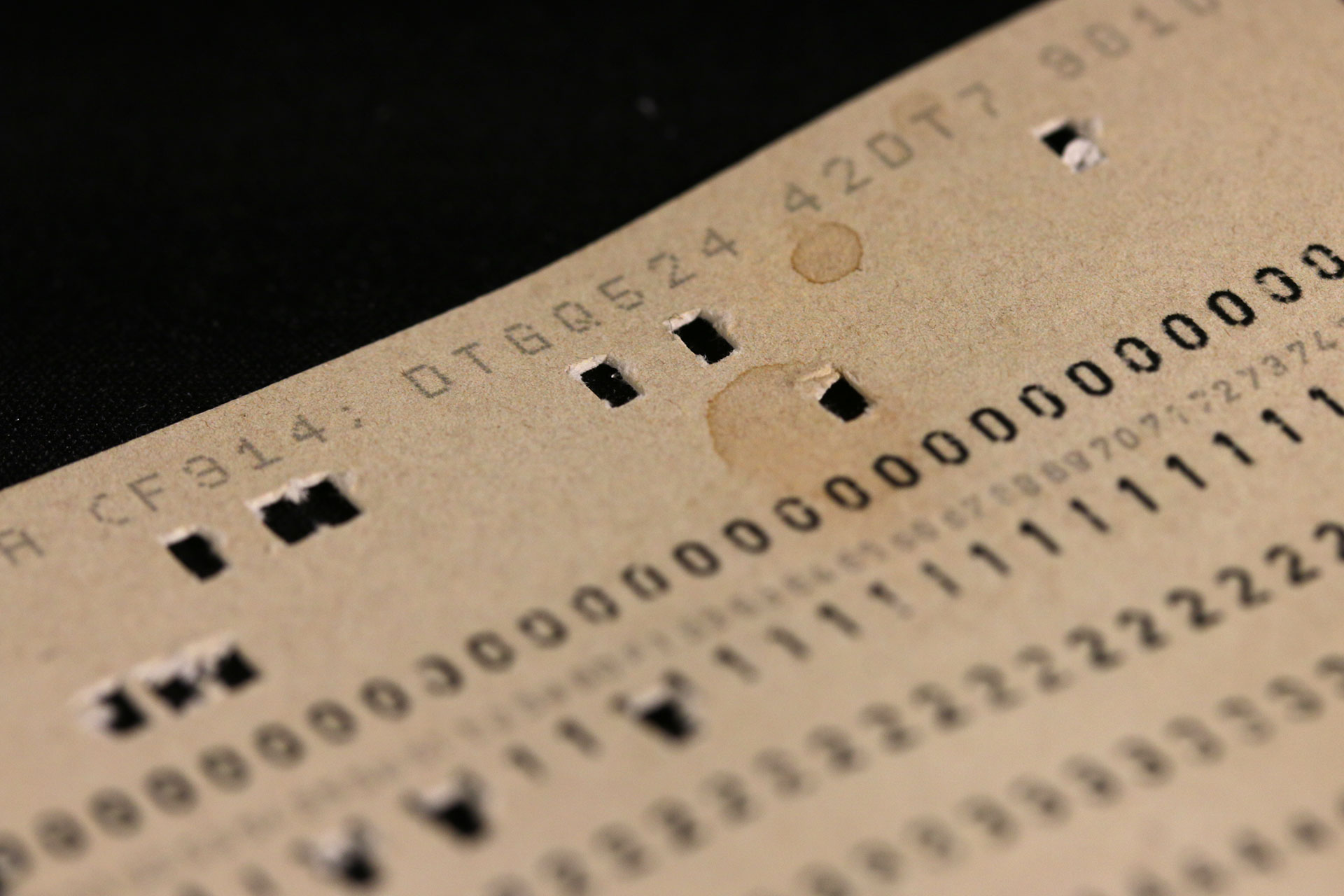One big clue was a splotchy stain on card 602. Based on some rigorously scientific test spills I conducted in my kitchen, the stain most resembled the soaked-in remains of a drop of light-colored tea. I bombarded a piece of modern cardstock with coffee, tea, chicken soup, bacon grease, wood stain, and oil paint—just to be sure.

During my war against paper, I left the punch cards slowly rotating on the plate of a 3D scanner I recently purchased. It was expensive, but I figured it was like investing in a Xerox machine in the 80’s. The scanner used a digital camera in conjunction with a laser to record the surface of an object and map photographs onto the model; in effect, preserving my stack of cards as a high-res pseudo-copy.
When I first bought the cards, they were wrapped up with paper and string, packaged as a handheld unit instead of stacked neatly in a standard issue box of two thousand. Somehow cards 601-700 had been separated from the rest of the program, and I wanted to know what, if anything, made these cards special.